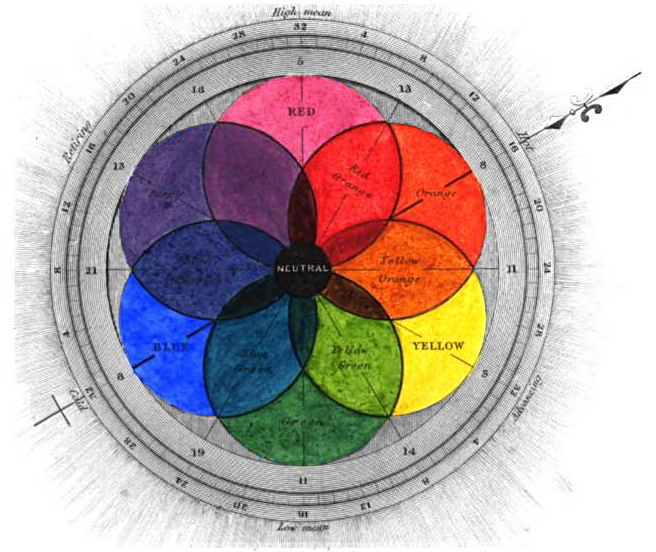Warm colors are those near the red end of the spectrum, reminiscent of fire: red, orange, yellow:

Cool colors are those near the blue end of the spectrum, reminiscent of ice: purple, blue, cyan:

Green is often considered to be within the cool colors, but depending on the hue and on the context can be warm as well (for example, when in a composition with earthy browns).
Warm colors are generally thought to evoke feelings of comfort, closeness, and passion.
Cool colors are considered to evoke feelings of sadness, remove, and calm.
Additionally, cool colors are said to recede into the background, while all other things being equal, warm colors seem to be closer.
The concept of warm versus cool colors is often attributed to Goethe, who certainly wrote about it as part of his overall theory of color opposition. It may also be the idea of one of Goethe's contemporaries. And it may be very culturally Western. For example, in English, we say that someone who is sad is "blue". I don't know how this association relates to theories of aesthetics and emotion from Eastern cultures, and it seems very different from the associations of the Lakota Sioux color wheel. But, in any case, the associations in western art are well-accepted.
The diagonal line in this 19th century color chart represents an axis (not a division), where warm colors are closer to the top-right and cooler colors closer to the bottom-left.

From George Field's Chromatography; or, a Treatise on Colours and Pigments, and of their Powers in Painting, 1841
In your example picture, the red tree and sunlit leaves on the ground are warm. The blue sky behind the trees makes the background cooler, but the green trees, with their touches of warm sun demonstrate how green can have a warm feeling as well.
Cool colors can be bright, and warm colors can be dull, or the other way around. It's a question of the hue, not the saturation or lightness or other qualities.
Note that this an art theory concept and is completely different from color temperature as used in photographic white balance. That comes from physics, and low color temperature corresponds to conceptually warmer red and yellow hues, and high color temperature corresponds to "cold" blue. This is because our instinctive feel for the warmth of color has to do with our ancestors' experience of fire, and blue-hot fires don't occur in our normal experience of nature, where fire is usually burning at relatively low temperatures.
For further reading, I highly recommend Michael Freeman's Mastering Color Digital Photography. This is out of print in the US (may be available used) but is available in the UK as Colour: The Definitive Guide for Serious Digital Photographers. Like other Lark Press books (and unlike Freeman's later books from different publishers), it suffers from some annoying editing and layout glitches (misplaced captions, typos), but the content is still really good.
